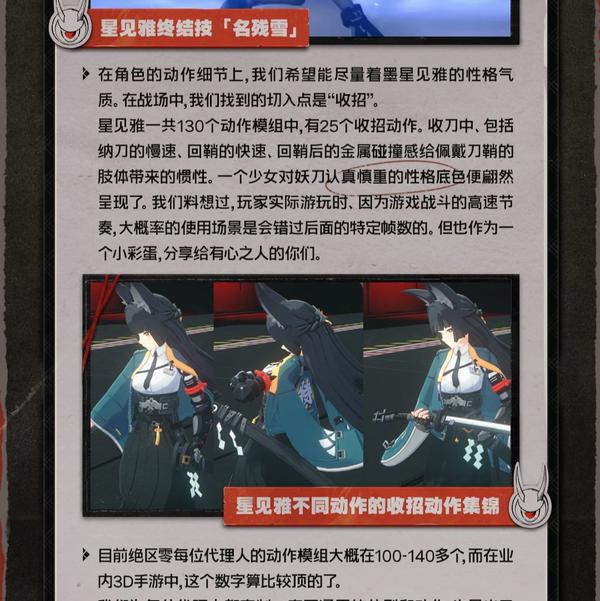Action Modules in Zero District: A Technical Deep Dive
Zero District’s claim of 100-140 action modules per character represents an ambitious technical achievement in animation fluidity and combat mechanics, surpassing many contemporary action games in terms of animation complexity.

The reported number of action modules in Zero District represents a significant technical undertaking that merits careful examination. To understand its implications, we must first clarify what constitutes an action module in modern game development.
Action modules in 3D games encompass more than just basic attack animations. They include transition states, interrupt animations, recovery frames, and contextual responses to different combat situations. For example, a single “attack” action typically requires multiple modules to handle different scenarios:
- The basic attack animation
- Various transition animations into and out of the attack
- Interrupt animations if the attack is canceled
- Recovery animations
- Environmental interaction variations
- Different versions based on character state (running, walking, etc.)
Zero District’s approach appears particularly sophisticated in its handling of combat transitions. The game demonstrates fluid animation blending between different states - from basic attacks to special moves, from dodges to counters. This level of smoothness requires numerous intermediate animation modules to handle all possible state transitions without visible animation “pops” or jarring movements.
The game’s combat system also incorporates various contextual actions. A character’s response to being hit, for instance, may vary based on:
- The type of attack received
- The character’s current state
- The environment
- The timing of player inputs Each of these variations requires its own set of animation modules to maintain visual consistency.
While some may question whether 100-140 modules per character is necessary, this number becomes more understandable when considering all the edge cases and transitions that must be handled in a modern action game. For comparison, many contemporary action games utilize 50-80 base animation modules per character, with some more complex titles reaching higher numbers for their main protagonists.
The significant number of action modules in Zero District speaks to the development team’s commitment to animation fidelity and combat responsiveness. Rather than relying on generic animations or simplified transitions, they’ve created specific modules for numerous combat scenarios, resulting in more natural-looking character movements and more precise combat mechanics.
This technical choice also has gameplay implications. More animation modules allow for greater combat depth, as players have access to more nuanced movements and responses. The fluid transitions between states enable more complex combo systems and tactical options, contributing to the game’s depth without necessarily increasing its complexity for casual players.